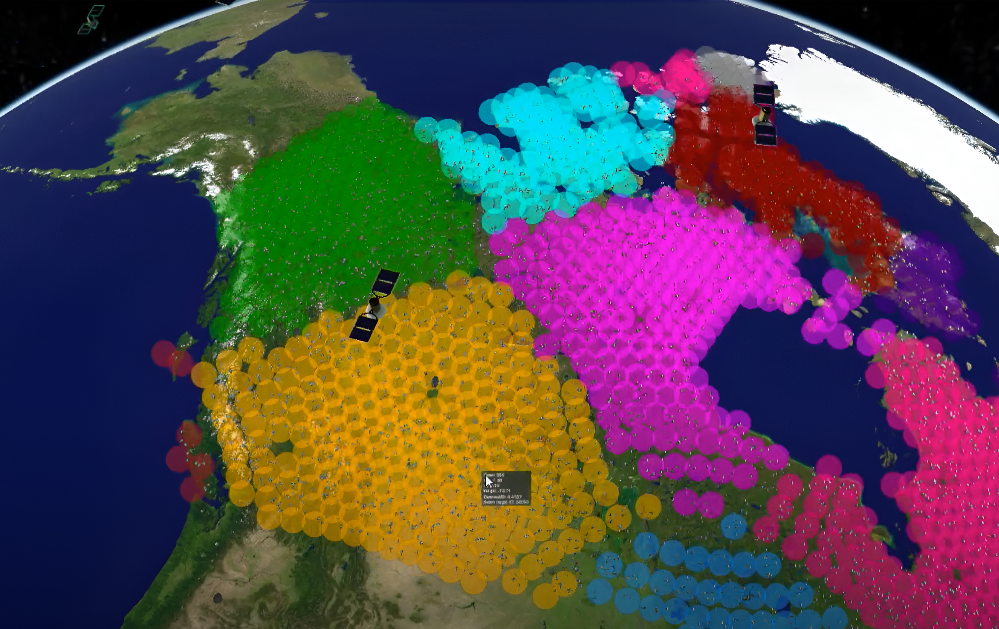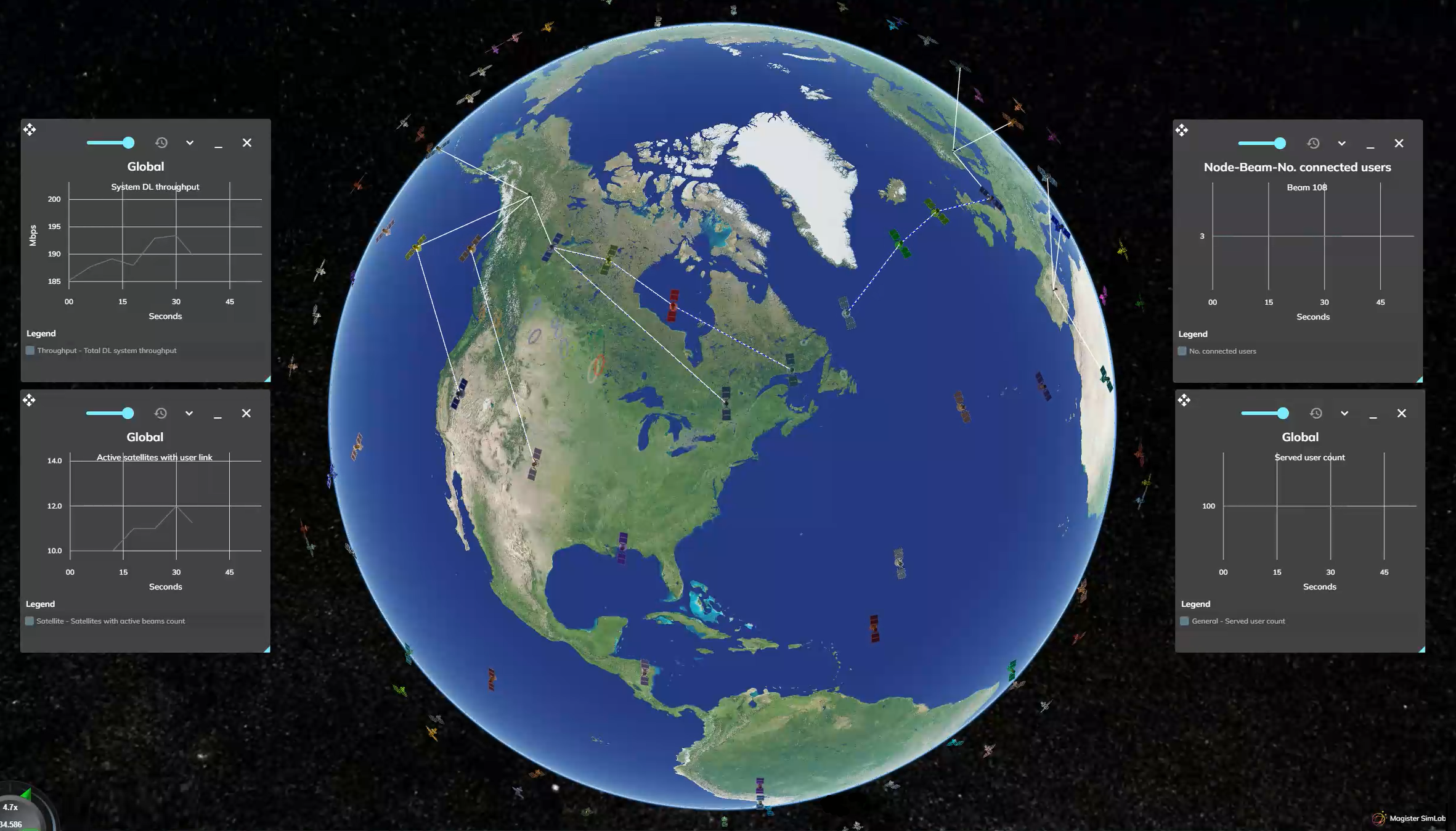5 ways simulations drive sustainability in space
May 26, 2025
May 26, 2025
In 2025, space presents vast opportunities for innovation and business growth. However, to ensure it continues benefiting people around the world for generations to come, we must protect its environment through sustainable practices.
Let’s take a look at how simulation software supports more sustainable decision-making in space missions – from design optimization to minimizing physical prototypes.
One of the key challenges in space sustainability is the growing volume of resident space objects (RSO) particularly in Low Earth Orbit (LEO). This includes the increasing number of satellites and other objects being launched to space for purposes like satellite internet connectivity and Earth observation.
Sustainability is a central aspect of corporate social responsibility. Companies are expected more than ever to comply with existing and upcoming sustainability regulations – not only to meet legal requirements, but also to strengthen reputation and maintain customer relationships.
Just like sustainability on Earth, organizations must consider space sustainability early in the planning, design, and execution of new space activities.
An increasing number of satellites are being launched into orbit in large constellations. While these systems offer huge benefits for society, poor planning can lead to overcrowding, insufficient performance, and increased collision risks.
Simulation enables engineers to model and optimize satellite constellations with precision. This includes accounting for the entire life cycle of the satellites, from launch to deorbit, ensuring that sustainable operations are embedded in these systems from day one.
With our simulation software, it’s possible to explore and optimize the performance and characteristics of Non-Geostationary Orbit (NGSO) and Geostationary Orbit (GSO) satellite constellations in detail. This includes satellite constellations in Low Earth Orbit (LEO), Medium Earth Orbit (MEO) and Geostationary Orbit (GEO).
Together with the European Space Agency, we have developed the C-DReAM simulator for the purpose of designing complex NGSO and GSO satellite constellations of various sizes. It helps satellite system architects design and verify the satellite system in terms of e.g. number of satellites, number of orbits, inclination, orbital height, link budget parameters, and frequency bands.

C-DReAM simulating satellite constellation coverage
C-DReAM helps identify the most optimal configurations – such as determining the ideal number of satellites for your constellation. Through performance, coverage and capacity optimization, it’s possible to reduce the number of satellites needed, consequently resulting in cost and energy savings in manufacturing and launch.
Simulation isn’t meant to be just for testing the system as an afterthought. To deliver the best possible benefits, it should be embedded from the very start of system design – helping you explore and identify the most optimal choices for your constellation.
According to the European Commission, over 80% of a product’s environmental impact is determined at the design stage.
Satellites, ground systems, subsystems and other associated infrastructure consume large amounts of energy. Optimizing energy use from the start is therefore essential, with new solutions for this being developed every day.
Some examples include integration of renewable energy sources like solar power and green propulsion systems, as well as new technologies such as High-Throughput Satellites and Inter-Satellite Links.
Simulators make it possible to optimize the resources and energy consumption of satellite constellations from the planning phase of the mission. This includes possibilities for:

C-DReAM simulating Inter-Satellite Links
While physical prototypes are an essential part of designing new space systems, they are often resource-intensive to produce. Digital simulations can reduce the need for physical prototyping, helping cut down material waste, and accelerating development.
Simulations are not only more sustainable than physical test setups – they’re also faster and more cost-effective.
With simulation software, engineers can test practically unlimited design scenarios without additional material use or high costs. This allows them to optimize systems for sustainability and performance early in the design process, also leading to faster time-to-market.
Ultimately, the most effective approach may combine physical and digital prototyping. Digital simulations guide teams toward optimal designs early, while a select number of physical prototypes are used for validation under real-world conditions.
Space missions are inherently high-risk. Technical malfunctions, misinterpretations of data, or human errors can potentially result in major financial losses and environmental harm.
Failures don’t just impact a single mission. They leave behind non-functioning satellites and space debris, adding to the already congested environment in Low Earth Orbit. Space debris can pose serious risks to future missions, threatening the safety and sustainability of orbital operations.
By using simulators to test and optimize scenarios from multiple angles – technical, operational and environmental – teams can reduce the likelihood of mission failures.
Early validation leads to better-informed decisions, increased reliability, and fewer costly setbacks throughout the mission lifecycle.
As concerns around space sustainability grow, so do the efforts to regulate it. From the Clean Space initiative of the European Space Agency to emerging global debris mitigation plans, organizations are increasingly expected to demonstrate that their missions meet space sustainability criteria.
While simulations don’t enforce compliance directly, they support it proactively. By modeling different mission architectures, teams can align their designs with emerging regulations, being able to explore the most sustainable alternatives before hardware decisions are made.
This approach supports more environmentally responsible decisions and lowers the risk of costly redesigns if sustainability concerns arise later.
When sustainability is considered from the start, it also strengthens a company’s reputation as a responsible player in the space sector. This can help build trust with stakeholders, and establish the company as a credible actor toward more sustainable space operations.